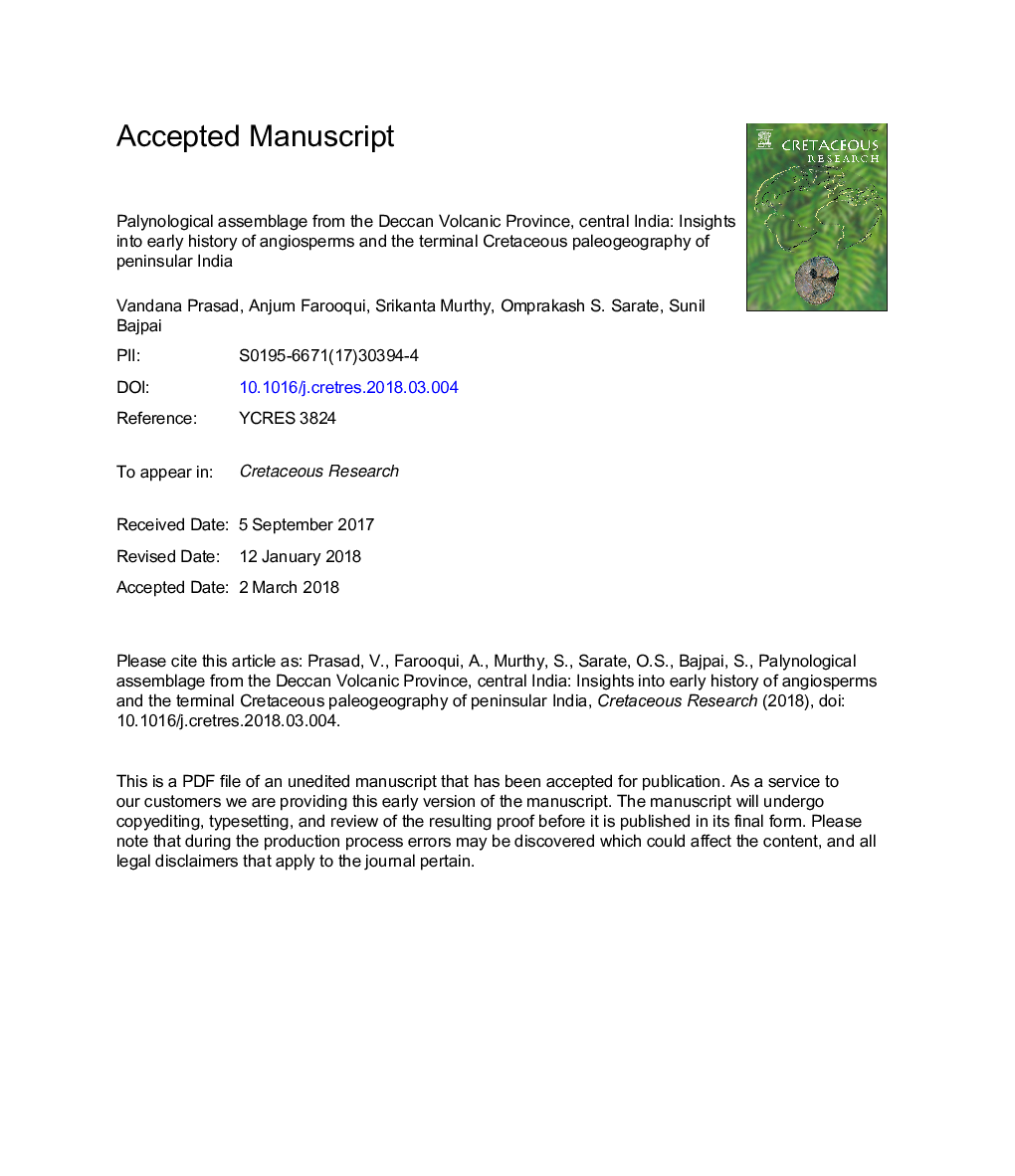| کد مقاله | کد نشریه | سال انتشار | مقاله انگلیسی | نسخه تمام متن |
|---|---|---|---|---|
| 8916305 | 1642037 | 2018 | 44 صفحه PDF | دانلود رایگان |
عنوان انگلیسی مقاله ISI
Palynological assemblage from the Deccan Volcanic Province, central India: Insights into early history of angiosperms and the terminal Cretaceous paleogeography of peninsular India
ترجمه فارسی عنوان
مونتاژ پالینولوژیک از استان دونک ولکانی، مرکزی هند: بینش در مورد تاریخ زودگذر ناحیه زردآلو و ترمینال پائولگوگرافی کرتاسه هند شبه جزیره
دانلود مقاله + سفارش ترجمه
دانلود مقاله ISI انگلیسی
رایگان برای ایرانیان
کلمات کلیدی
موضوعات مرتبط
مهندسی و علوم پایه
علوم زمین و سیارات
فسیل شناسی
چکیده انگلیسی
Sedimentary deposits of the Deccan Volcanic Province (DVP), of central India are rich in fossil flora and fauna. Based on a new palynological study of Infratrappean deposits from a borehole succession located in the Ashtona village, Yeotmal District, Maharashtra (Wardha Basin), this paper attempts a reconstruction of the Late Cretaceous paleovegetation, paleoecology, depositional environment and paleogeography of central India prior to Deccan volcanism, and also seeks to evaluate the early history and timing of the angiosperm diversification relative to the Cretaceous-Paleogene (K-Pg) transition. The stratigraphic age of the Infratrappean sequence was determined on the basis of several index palynomorphs (Aquilapollenites, Jigansupollis), Azolla cretacea, Gabonisporis sp, Scollardia conferta of Maastrichtian age. Two new pollen species (Dipterocarpuspollenites cretacea sp. nov., Retiacolpites pigafettaensis sp. nov., and one new dinoflagellate species (Pierceites deccanensis sp. nov.) are described in this study. The numerical abundance of the mangrove pollen Spinizonocolpites pollen (Nypa), combined with the dinoflagellate cyst Pierceites deccanensis, indicates a brackish marine depositional setting close to low-lying coastal forests in central India during the Late Cretaceous. Furthermore, the new evidence presented here from an inland location in the Deccan province strongly suggests the existence of a shallow marine embayment in central India during the late Maastrichtian, which extended from the east coast through the Godavari rift zone, thus adding significantly to the previously described marine signatures from the Upper Cretaceous sequence of Rajahmundry area on the south-eastern coast of peninsular India. The Late Cretaceous fossil pollen of Dipterocarpaceae documented here provides compelling evidence for the evolution of these tropical rain forest elements in the insular India and their dispersal to south east Asia after the initiation of India-Asia collision, consistent with the Out of India hypothesis. The new palynomorph assemblage also has significant implications for our understanding of the floral response to the initiation of Deccan volcanism.
ناشر
Database: Elsevier - ScienceDirect (ساینس دایرکت)
Journal: Cretaceous Research - Volume 86, June 2018, Pages 186-198
Journal: Cretaceous Research - Volume 86, June 2018, Pages 186-198
نویسندگان
Vandana Prasad, Anjum Farooqui, Srikanta Murthy, Omprakash S. Sarate, Sunil Bajpai,
